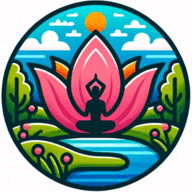5 Questions to Reflect On Growth as a Yoga Teacher
Continuous self-improvement is the hallmark of a dedicated yoga teacher. This journey requires reflection on teaching methodologies, enhancement of subject matter expertise, and a commitment to student engagement. Delve into strategies that can transform a yoga practice into an enlightening experience for both the instructor and the students.
- Deepen Your Asana Knowledge
- Explore New Meditation Techniques
- Foster Student Engagement in Classes
- Strengthen Your Anatomy Understanding
- Craft Purposeful Yoga Sequences
Deepen Your Asana Knowledge
Deepening asana knowledge is crucial for yoga teachers to provide better instruction. This can be achieved through various methods such as attending workshops, studying ancient texts, or practicing with experienced teachers. By expanding their understanding of different poses, teachers can offer more precise alignments and modifications to students.
This deeper knowledge also allows for creative sequencing and a more comprehensive approach to teaching. Exploring the history and philosophy behind each asana can add depth to classes and inspire students. Take the initiative to expand your asana expertise and watch your teaching transform.
Explore New Meditation Techniques
Exploring new meditation techniques can greatly enhance a yoga teacher's toolkit. There are numerous approaches to meditation, each offering unique benefits and experiences for practitioners. By learning different methods, teachers can cater to diverse student needs and preferences.
This exploration might involve studying various traditions, attending retreats, or working with experienced meditation instructors. Expanding one's meditation repertoire can also deepen personal practice, which in turn enriches teaching abilities. Commit to discovering new meditation techniques and bring fresh perspectives to your classes.
Foster Student Engagement in Classes
Enhancing student engagement is key to creating impactful yoga classes. This can be accomplished by developing strong communication skills, creating a welcoming atmosphere, and being attentive to individual needs. Incorporating interactive elements, such as partner work or group discussions, can foster a sense of community within the class.
Using creative themes or storytelling can make classes more memorable and inspiring for students. Regularly seeking feedback from participants can provide valuable insights for improvement. Strive to create an engaging and inclusive environment that keeps students coming back for more.
Strengthen Your Anatomy Understanding
A solid understanding of anatomy is fundamental for yoga teachers to ensure safe and effective instruction. Key areas to focus on include the musculoskeletal system, joint movements, and common injury points. Studying the effects of different poses on the body can help in creating balanced and beneficial sequences.
Understanding anatomical variations among individuals allows for better adaptations and modifications in class. This knowledge also enhances the ability to offer hands-on adjustments safely. Dedicate time to deepening your anatomy knowledge and see how it elevates your teaching.
Craft Purposeful Yoga Sequences
Improving sequencing skills is essential for creating well-rounded and purposeful yoga classes. This involves understanding how to build towards peak poses, balance different types of movements, and create a logical flow. Studying the energetic effects of various asanas can help in crafting sequences that address specific goals or themes.
Experimenting with different class structures and durations can expand a teacher's repertoire. Learning to adapt sequences on the fly based on student needs is also a valuable skill. Challenge yourself to develop innovative and effective sequences that keep your students engaged and progressing.

